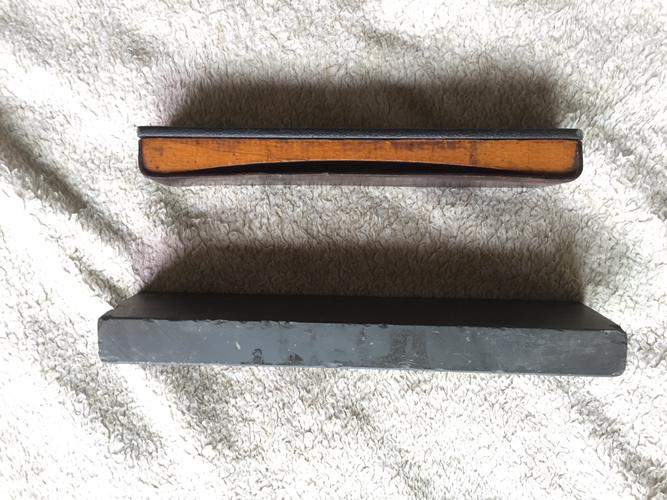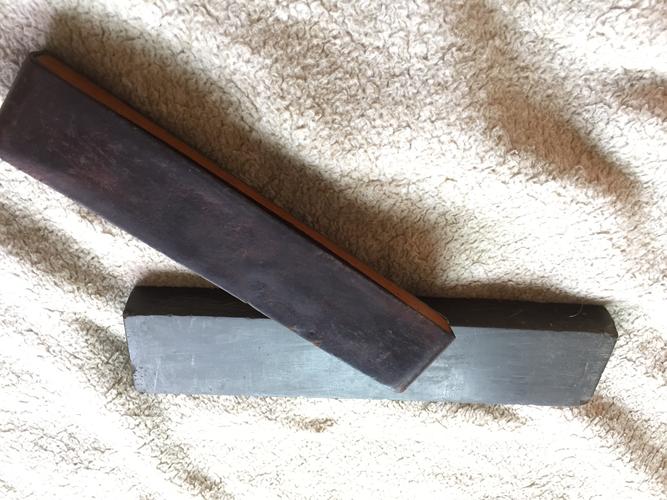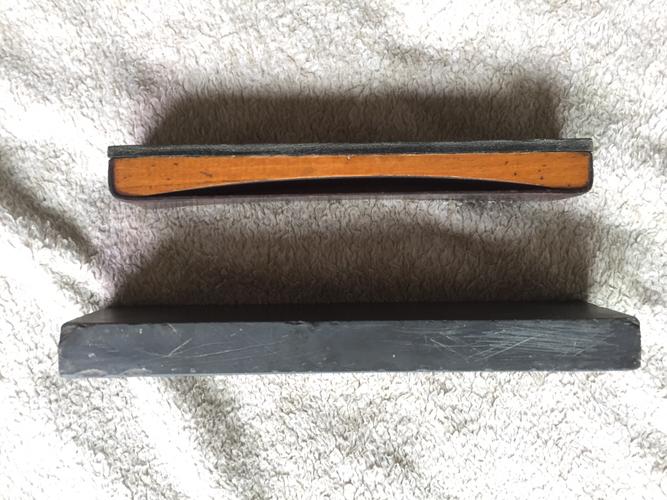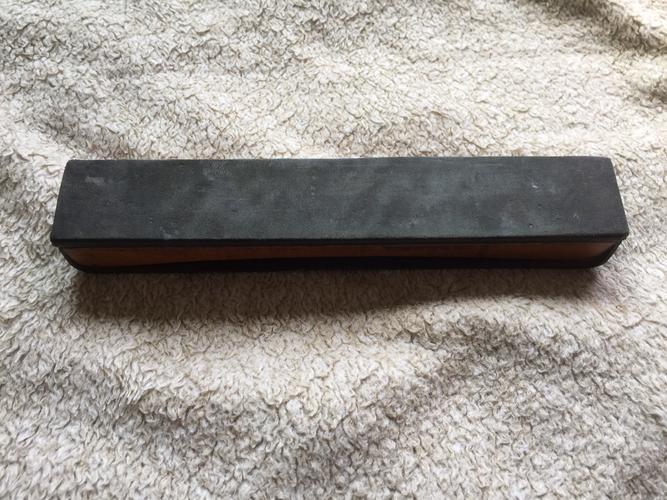Results 1 to 10 of 13
Thread: Strop and Stone Identification
-
09-07-2017, 08:13 PM #1
 Strop and Stone Identification
Strop and Stone Identification
When I was gifted my first straight razor I was also given these two items. I was wondering if anyone could let me know what they are and if I should be using them on my razors? If so how?
The strop is about 1.5"x6.5" and the stone is 1.5"x8".
-
09-07-2017, 08:26 PM #2

If you could, I think people here will find a couple more pictures easier to make a possible ID, I think a sideway picture of the stone can help.
Take a look at the wiki/library to read up on the basics about strops and hones and how to use them, Shave Library
-
09-07-2017, 08:37 PM #3

Thanks .. here are some more photos.



-
09-07-2017, 08:51 PM #4illegitimum non carborundum



- Join Date
- Jan 2008
- Location
- Rochester, MN
- Posts
- 11,552
- Blog Entries
- 1
Thanked: 3795
Well, the upper one is a strop and the lower one appears to be some sort of slate. Hopefully it is a Thuringian! In order to try it out, all you need to do is flatten one of the larger surfaces and chamfer the long edges. Both tasks can be done with wet/dry sandpaper used under running water. Most likely it will be used as a finisher but only testing will determine that.
-
09-07-2017, 09:08 PM #5

Is this something I can use the Norton flattening stone to flatten on chamfer?
-
09-07-2017, 10:51 PM #6

The strop would appear to be of a French variety, and is not to be overlooked! I have one here that is almost identical to what you have posted and have seen others of varying sizes with differently surfaced leather. The tiny size would seem to go against the American hanging strop method, which seems to demand wider and longer surface areas, but it can be used. I like to use mine, which measures 1-1/4" x 6-3/4" approx., on an outstretched palm. It is especially good with pocket knives.
I'm curious about the leather or cotton/linen piece lying underneath your strop as shown. Can you post a decent pic of it?Last edited by Brontosaurus; 09-07-2017 at 10:58 PM.
Striving to be brief, I become obscure. --Horace
-
09-07-2017, 10:59 PM #7

Here is the bottom of the strop. Any videos on how it is supposed to be used? I assume small "X" patterns.

-
09-07-2017, 11:05 PM #8

Thanks. No videos on this one, I'm afraid, it is an esoteric item. But yes, as to the pass, you would want a short, laterally-biassed, X-stroke. I would follow German-sourced demonstrations of Solingen loom strops as far as videos would go in this regard if they're out there.
As to the bottom surface, I still can't make it out. I have seen designs with cotton or linen pieces underneath, intended for pasting, but this one seems especially spongy. What do you think the material is? Or can you take a detailed shot of it outside, under natural lighting? Perhaps it is just there for obtaining traction on a flattened support.Last edited by Brontosaurus; 09-07-2017 at 11:08 PM.
Striving to be brief, I become obscure. --Horace
-
09-07-2017, 11:07 PM #9illegitimum non carborundum



- Join Date
- Jan 2008
- Location
- Rochester, MN
- Posts
- 11,552
- Blog Entries
- 1
Thanked: 3795
No. First, the Norton flattening stone tends to not be flat, so you need to lap it flat first before you use it.


Second, it really is not intended, nor works well, for natural hones. This is because naturals would cause it rapidly to become not flat again.
Yes, it would be used with x patterns. I'm not aware of any video specifically for it but the stroke is to be done in a manner to contact the entire blade over the course of the stroke.
-
09-07-2017, 11:11 PM #10


 1Likes
1Likes LinkBack URL
LinkBack URL About LinkBacks
About LinkBacks






 Reply With Quote
Reply With Quote
